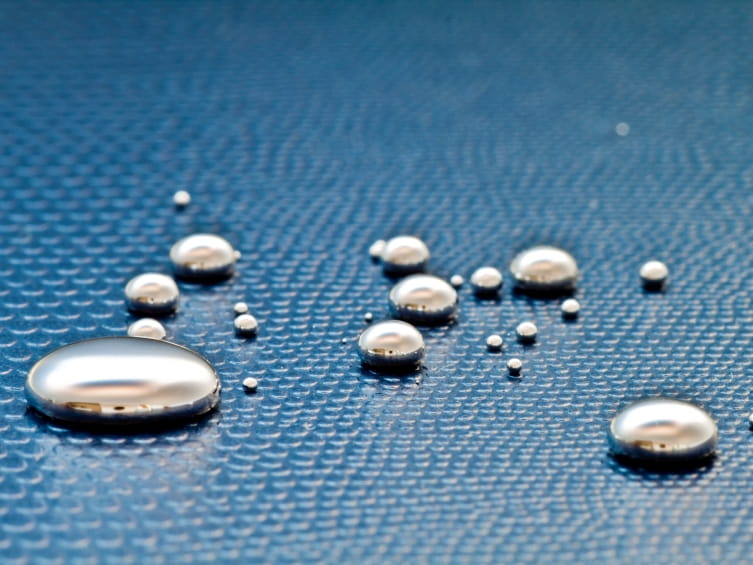Mercury Poisoning: Symptoms, Treatment, and More

The Bottom Line
A broken mercury-containing thermometer can be toxic if the vapors are inhaled. The risk of poisoning from touching or swallowing mercury from a broken thermometer is low if appropriate clean-up measures are taken.

How do mercury thermometers work?
Dating back to the 1800s, the oldest thermometers still used today are mercury in glass. This type of thermometer is a glass tube with a narrow hole down the center leading to a mercury-filled bulb.
Mercury is a thick, shiny, fast-moving liquid metal that can break up into little balls that reform when pushed together. It is these properties of mercury that led to its nickname, “quicksilver.” When the mercury in a thermometer is warmed, it expands and moves up inside the tube, rising to a particular level. The outside of the thermometer is marked to show the temperature being measured.
Temperatures can be checked with mercury thermometers in the mouth, rectum, or armpit. Oral and rectal thermometers differ and are made specifically for those uses. While rectal temperature is the most accurate, it is often impractical to measure temperature this way.
Are mercury thermometers dangerous?
Outside of the risk of puncturing tissue by pushing it in too hard, an intact mercury thermometer is not dangerous. The danger occurs when a mercury thermometer is broken. Most oral and rectal mercury thermometers contain about 0.5–0.6 g of mercury. The main health risks associated with mercury are from the vapors, which are produced at room temperature, and especially when mercury is heated. These vapors can be inhaled and absorbed into the body. The immediate effects of inhaling highly concentrated vapors include coughing, sore throat, difficulty breathing, chest pain, vomiting, and headache. People have been known to accidentally heat up mercury and produce vapors by using a vacuum cleaner to clean up a mercury spill.
Exposure to broken glass thermometers can lead to injury from the broken glass. Studies of children in emergency rooms have noted injuries to the mouth, rectum, and ear from broken thermometer glass. Another danger presented by broken mercury thermometer is the injection of mercury into the body through a wound created by broken glass.
What are safe alternatives to mercury thermometers?
Newer thermometers include non-mercury liquids contained in glass, as well as digital and electronic devices. Thermometers that check body temperature in the ear, across the forehead, or which have a digital display do not contain mercury. The Environmental Protection Agency (EPA) recommends using mercury-free thermometers, but does not specify the type.
If the liquid in the thermometer is not silver in color, it does not contain mercury. The non-silver liquid-in-glass thermometers is typically colored alcohol. Contact with the skin or inside of the mouth could cause minor irritation or a burning sensation that should go away quickly. If the liquid spills, rinse off the exposed areas with water. If the liquid gets in the eye, flush the eye with water for 15–20 minutes, then call Poison Control.
Some thermometers contain a silver substance that is not mercury called Galinstan. Galinstan liquid consists of tin, indium, and gallium. According to its manufacturer, Galinstan is not toxic when swallowed because it passes through the digestive system without effect. Inhalation is also not a concern because there is no absorption through the lungs. Skin exposure to Galinstan can cause irritation. If a thermometer has silver liquid and is not labeled as “mercury-free,” assume it contains mercury.
Electronic thermometers contain no potentially hazardous liquids. However, many of them contain button-cell batteries, which can be very harmful if swallowed. If a battery is swallowed, contact the battery ingestion hotline at 800-498-8666 or call Poison Control.
How to safely dispose of a mercury thermometer.
A discarded mercury thermometer is a form of hazardous waste. Do not throw it in the trash. Contact your local health department for directions to the nearest household hazardous waste collection site. Be sure to put the thermometer in a tight container to prevent the escape of mercury if the thermometer breaks while being transported.
Is mercury toxic to the skin?
The amount of mercury in a mercury thermometer is not enough to cause poisoning if someone handles it with intact skin; however, skin irritation could occur. Mercury spilled onto broken skin or skin damaged by a skin condition like psoriasis should be removed with soap and water. After washing, call Poison Control.
What happens if I swallow some mercury from a thermometer?
Unintentionally swallowing the amount of mercury contained in most thermometers is unlikely to cause a problem because mercury is poorly absorbed by a healthy digestive tract. Rinsing with water and then spitting can help remove any mercury remaining in the mouth. It is still a good idea to call Poison Control or get help from webPOISONCONTROL online if someone swallows mercury, especially if the person has any type of digestive tract condition. We can help you decide if you should seek medical attention.
I broke a mercury thermometer. What should I do?
If you break a mercury thermometer, the first thing to do is to keep people and pets away from it. Mercury can spread easily across a floor and can be hard to see, so make the exclusion zone much larger than just the area of broken glass.
Since the primary danger presented by spilled mercury is from the fumes, open windows to ventilate the area well. Do not attempt to clean up the spill with a vacuum cleaner; this will only heat up the mercury and spread the fumes throughout a larger area. Once the area is cleared, review the EPA’s instructions for cleaning up a broken mercury thermometer. These instructions are very detailed, and following them will minimize the chances of mercury poisoning.
If someone has been exposed to a broken thermometer, contact Poison Control at 1-800-222-1222 for expert advice.
Karen D. Dominguez, PharmD
Certified Specialist in Poison Information
Revised William G. Troutman, PharmD
Professor of Pharmacy Emeritus
Poison Control Media Information
Did you find this page helpful? If so, we need your support. Poison Control is in constant competition with misinformation online. Links to www.poison.org or our webPOISONCONTROL triage tool from other websites and blogs help internet searchers quickly find accurate information and Poison Control’s contact information in an emergency. If you use the content from this page, please provide attribution via a link back to this page, www.poison.org, or https://triage.webpoisoncontrol.org/#!/exclusions. By doing so, you could save a life. Thank you!
Poisoned?
CALL 1-800-222-1222
Prevention Tips
- Use thermometers that do not contain mercury.
- Never allow children to play with thermometers or any other source of mercury.
- If a mercury-containing thermometer is broken, do not clean up the spilled mercury with a vacuum cleaner.
This Really Happened
A 17-year-old boy jumped from a ladder and landed on a medical thermometer, which broke and punctured his foot. At a hospital, the bulb of the thermometer was removed from his foot, and his wound was cleaned. Six days later, he complained of weakness and a loss of appetite. An x-ray of his foot showed deposits of mercury, and he had a toxic concentration of mercury in his blood. He was treated for 2 weeks with IV drugs that tied up the mercury and sped its removal from his body (from Erfantalab et al., 2019).For More Information
References
Poisoned?
CALL 1-800-222-1222
Prevention Tips
- Use thermometers that do not contain mercury.
- Never allow children to play with thermometers or any other source of mercury.
- If a mercury-containing thermometer is broken, do not clean up the spilled mercury with a vacuum cleaner.
